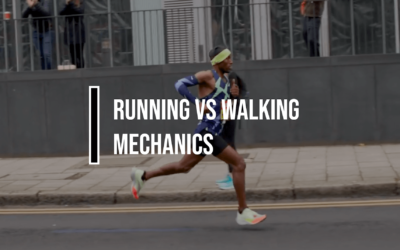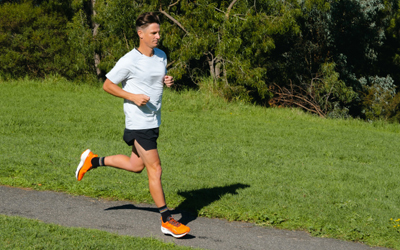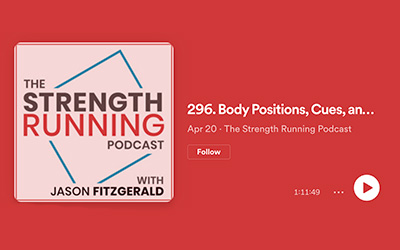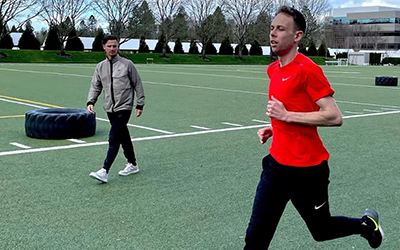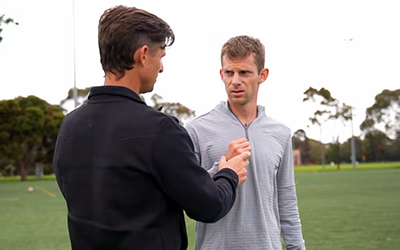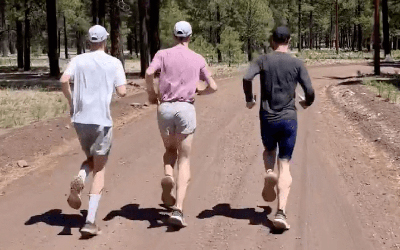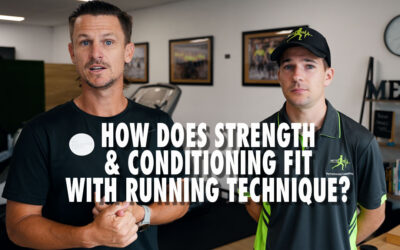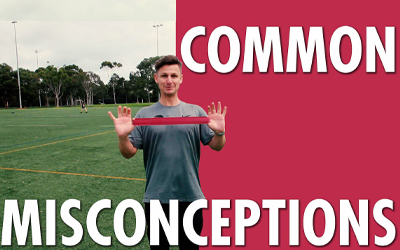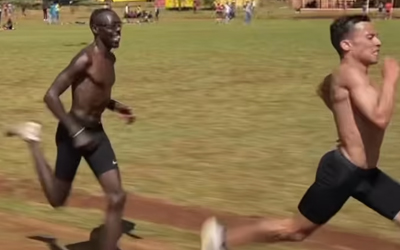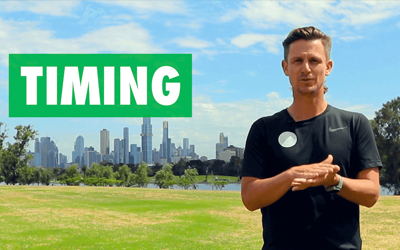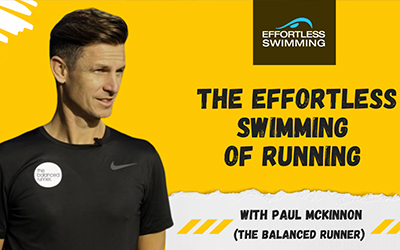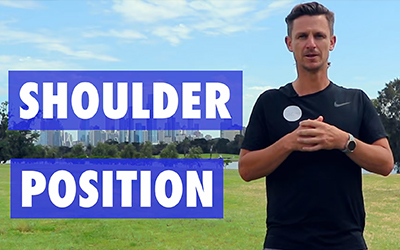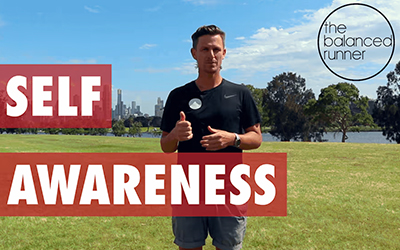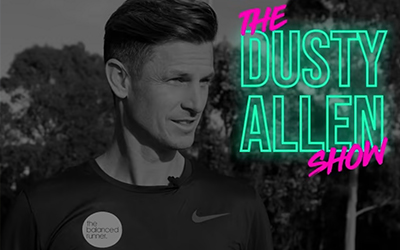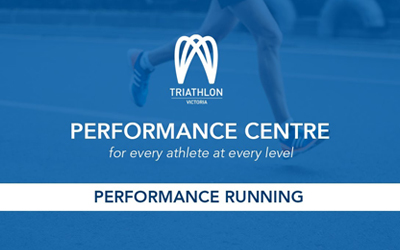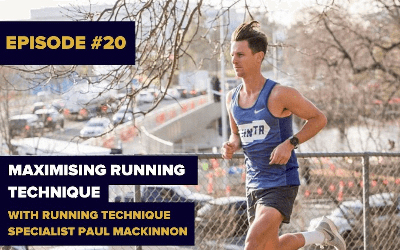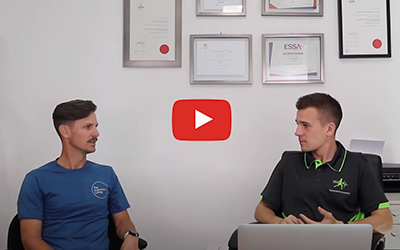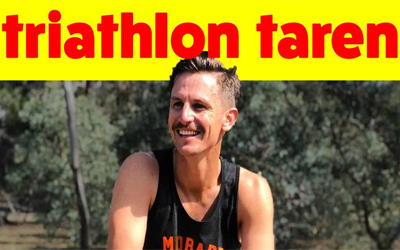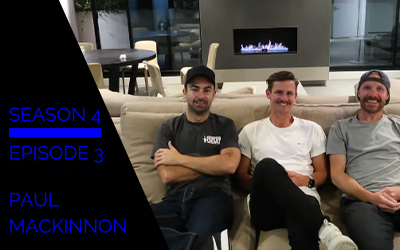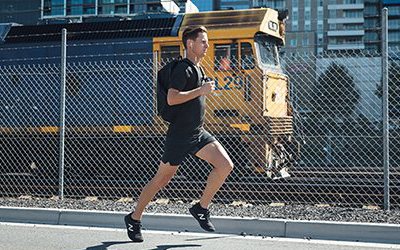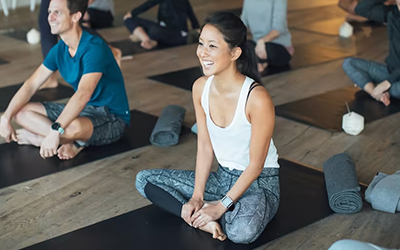Is There An Ideal Cadence When Running?
29 November 2023 | Category: Running Technique Advice
There’s something I need to get off my chest. Cadence in running is so poorly used and in most cases poorly understood.
For those wondering, cadence is the number of steps taken within a minute. It is an outcome. It is an outcome of many factors; leg length, pace, running mechanics and movement patterns. This is the reason why it is a poor focus for technique change.
Firstly, let’s talk about the elephant in the room and the ‘magical’ number of 180 steps per minute that is so often quoted and prescribed. Where did it come from?
In 1984 a study was done on Olympic athletes during competition. In each of the distance races, the cadence of these runners was measured, and the minimum cadence recorded was 180. Go figure! Who would have thought that a group of elite runners, competing at the pinnacle of the sport, would have a high step rate?… No mention of ground contact time, no mention of ground reaction forces or movement patterns. Just the number as a minimum step rate. And the ‘magic 180 cadence’ rule became made.
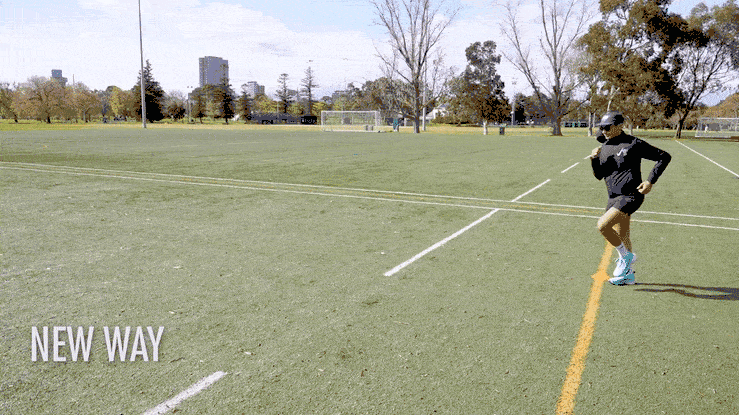
What about their easy pace? What about 1km rep or 400m rep pace? Nope, just the one number of 180 for all to try and hit. Overstriding? Hit 180. Heel striking? Hit 180. Easy run? Hit 180…. You get the picture. It’s akin to using speed as a mode of change of technique!
Yesterday I had a session with a new athlete and when he first started running he was told he had to run at a cadence of 185 steps per minute. For every run. Where is the logic in this? He spent the next 6 years wondering why he couldn’t get his easy pace down as much as he’d like and his fast pace was not as fast as he thought it should be.
After spending so long trying to shorten his stride to hit 185 at easy pace there’s no surprise why he found it hard to increase his range of motion through his femur swing to find more pace.
Take this hypothetical example of two runners. Both of these runners are running at a pace of 5min per km or 8 min per mile and have a cadence of 166. Now before you get all worked up and think that’s too low, bear with me. One is 5ft 6’, over strides, has an increased braking force upon landing and increased ground contact time (comparatively). The other is 6ft 3’, has excellent technique, has decreased ground time and increased flight time. The number outcome of cadence is exactly the same but we have two extremely different inputs. 166 is not the same as 166 in this case.
There is also a brand that labels their shoes between ‘cadence’ running and ‘stride’ running. Back to our hypothetical example of two runners, this time imagine they are moving with the same mechanics and running next to each other. One is close to a foot taller than the other and therefore has longer levers, running the same pace their cadence is 10-12 steps different due to leg length differences. Apparently one is a cadence runner and the other is a stride runner. Remarkable. We may as well just say these shoes are for short people and these for tall, it has the same effect.
I can genuinely understand why “increase your cadence” is prescribed to try to alleviate overstriding and braking forces going through the body. The issue is that asking an athlete to shorten their stride to match a number doesn’t actually address the problem. The athlete ends up shortening their movements as asked but they’re just doing the same movement more often. The movement itself hasn’t changed.
My suggestion is to change the focus of runners and running coaches to flight time and ground contact time. These two are directly influenced by how we move.
The retraining of our running mechanics is what is going to give us the best opportunity for change and improvement. Your cadence may very well increase (it may also decrease or stay the same), but it will be an outcome of a better movement pattern rather than the focus.
Not just, “increase your cadence”.
To summarise: I regularly tell my athletes that you need to be fit to hold 180! I’d rather you are in a good open range of motion, creating flight and float to hold tempo and race pace. Once you get fitter and fitter you will naturally be able to hold that range for longer AND have a higher cadence. There’s your pace!
See also: An example of Stride & Cadence with Paul Chelimo and Luis Orta
Check out more articles, podcast appearances and running technique tips:
One of the foundations of Running Technique explained – Running vs Walking Mechanic
Paul breaks down the common mechanics in both walking and running, and how using the proper running mechanic can make you more powerful, more economical and less prone to injury.
Broadsheet Feature Article: The Science To Help You Become a Better Runner
Broadsheet Feature Article: The Science To Help You Become a Better Runner 3 June 2023 | Category: Running Technique AdviceThis article originally appeared in Broadsheet in May 2023 as a feature between Paul MacKinnon and Puma Nitro. Photography by...
The Ultimate Running Form Episode with the Strength Running Podcast
The Ultimate Running Form Episode with the Strength Running Podcast 10 May 2023 | Category: PodcastPaul joined Jason Fitzgerald on the Strength Running Podcast for a great chat about everything running & running form. This podcast appearance...
Running Technique learnings from Galen Rupp
I have been lucky enough to work with Galen Rupp a few times over the past year as he looked to get back to his best for the marathon, find out some of the key learnings.
Congratulations Brett Robinson – Australian Marathon Record
I’ve been working with Brett Robinson for a little while now and a few weeks ago in the lead up to the Fukuoka Marathon we recorded the session to give some insight into Brett’s focus.
Jakob & Henrik Ingebrigtsen Form Comparison
This is just a very short breakdown of the form of the Ingebrigtsen brothers while they jog together.
Paul joins For The Kudos Podcast for a Technique Q&A
Paul has been working with both Brett and Joel over the past couple of years to improve their technique and their performance, so the boys invited him on to one of the Question & Answer episodes of the Podcast.
Running Technique Coaching vs Strength & Conditioning
If you have followed Paul for a while, you will know that he likes to have a bit of fun at the expense of the idea of a strength program improving your running technique. In this discussion with Exercise Scientist Nick Jankovskis we take the chance to explore where strength training does improve running and where it does not.
Common Misconceptions – Do Running Drills and Activation Improve Your Technique?
There are many common misconceptions around running and running technique. We are here to break down some common ones. Do drills, strength work and activation help your running technique?
An example of Stride & Cadence with Paul Chelimo and Luis Orta
I saw this video recently and thought it was a great opportunity to highlight the difference movement can make to running at top speed.
If you’ve been following for a while you’ll know I don’t use cadence as a cue, but it is a good indicator. In this case Paul Chelimo is 204 and Luis Orta is 240.
Timing of your movement when running
The timing of your movement is critical when running. This article outlines how to think about this and the affect it can have on injury. Running in time on your left and right side is a vital aspect of becoming a balanced runner.
Paul joins the Effortless Swimming Podcast
Paul and Brenton connected a little while ago over the similarities of their methodology and disruption of technique coaching, hence Brenton’s name for this podcast is ‘The Effortless Swimming of Running’, or as we might call it, Paul joined ‘The Balanced Runner of Swimming’!
How do you hold your shoulders when running?
How do you hold your shoulders when you are running? In this summary, we outline the common issues with tension in shoulders that many runners exhibit and how to switch off or open up your shoulders and the impact it can have.
How Do You Identify Your Running Technique?
A lot of people don’t take the time to be fully aware of what their body is doing while they are running. This article explains how to work through each part of your body and feel what is doing while you are running, and how to feel your own movement pattern.
Paul joins the Dusty Allen Show Podcast
The Dusty Allen show is borne on the premise that extraordinary stories are everywhere, you just need to know where to find them. Listen to the chat between Paul and Dusty.
Triathlon Victoria – The Performance Centre: Performance Running
Watch the Triathlon Victoria Performance Centre series, where Paul joined a host of other high-level coaches to discuss various aspects of performance running.
Why you should listen to your foot strike while running
Find out why all runners should listen to their feet and their ground contact when running on a wet or loose surface.
The Inside Running Podcast Featuring Paul Mackinnon
The Inside Running Podcast Featuring Paul Mackinnon Article | 28/1/2020 | Category: PodcastAfter working with Julian Spence on his technique over the last few months, Paul joins him for a chat about running, life and his philosophy of running...
Maximising running technique with the Athlete’s Garage Podcast
Maximising running technique with the Athlete’s Garage Podcast Article | 20 December 2019 | Category: PodcastThe Athlete’s Garage is a podcast by The Motion Mechanic and Paul joined them in November 2019 to discuss everything about running...
Who Taught You to Run? With METS Performance Consulting
Who Taught You to Run? With METS Performance ConsultingPaul joins the team from METS Performance Consulting on the Physiology Secrets podcast to discuss running technique and the potential impact it has on performance for all athletes.Have you ever...
Triathlon Taren Podcast Interview
Triathlon Taren Podcast InterviewPaul joined Triathlon Taren for a video based session to review his technique and then an interview on his Podcast. You can listen below and check out more of Taren’s work at https://mymottiv.com/ or on YouTube at...
Runner Chats with Paul Mackinnon
Runner Chats with Paul Mackinnon A laid back chat about life and running with Pete and Nathan from Runner Chats. Ranging from everything from hockey to Run the Bay Relay and a little bit of technique. Check out the podcast below or the rest of...
Zero to Half-Marathon in 4 Months
Zero to Half-Marathon in 4 Months 3 May 2018 | Category: Running Technique AdviceThis article was first featured in Men’s Fitness Magazine. Paul MacKinnon, aka the balanced runner, gives us some simple tips on how to get from the couch to a half...
Post from Spoonful of Sarah: The one fix that changed my running life
Post from Spoonful of Sarah: The one fix that changed my running life This post is originally from Spoonful of Sarah – The one fix that changed my running life by Sarah HollowayAs you may also know, running is not my exercise of choice both because...
